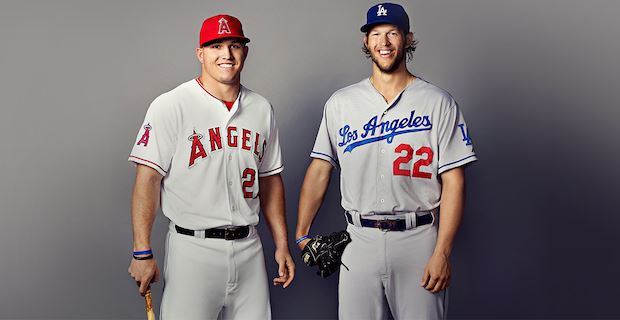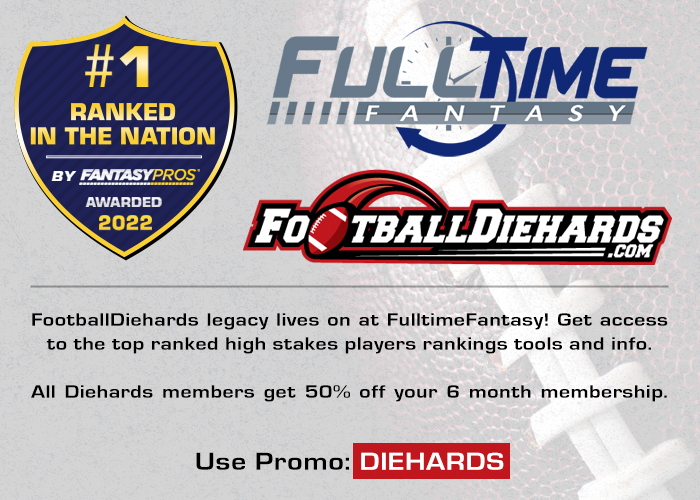

The development of FullTime Scores started with the theory around Average Player Scores. In today’s Fantasy Baseball market, it is extremely difficult to determine a baseball player’s value when drafting when you have multiple positions never mind multiple scoring categories. The average player theory is a way to compare players at similar positions. Once we have a baseline of the average player, we can determine which players have the biggest edge. The next step after establishing these scores at each position is then comparing the best option at other positions.
Each season, the player pool changes in the Fantasy baseball world. Some positions will have more depth and others will only have a couple of strong options. When a Fantasy owner is preparing to do his draft prep, he wants to find the hidden values at each position. By doing this, he can select the strongest options at the other positions early in the draft.
FullTime Fantasy has developed a way to determine each player’s value within each category relevant to their production. Hitters have five offensive categories (batting average, runs, home runs, RBI, and stolen bases). Pitchers will have five categories (wins, ERA, WHIP, strikeouts, and saves).
With these scores, a Fantasy owner can quickly look at stats to see which players have the most value either by last year’s stats or this year’s projections from any source. When using projections, a Fantasy owner’s success will only be as strong as his/her ability to interpret information. Finding the best source for that information is important.
Our SFSscore is built for 12-team, 5-by-5 Roto leagues with once a week pitching moves. In the future, we could modify the options for 10-team and 15-team leagues, and we may even add bi-weekly pitching move leagues.
The toughest part for any Fantasy owner to understand is draft rankings or cheat sheets due to the underlying information behind each player’s profile. At any position in baseball, I may only like a handful of players. When I rank them, I can’t leave players I don’t like off the cheat sheet, and it wouldn’t be fair to rank them poorly just based on my opinion.
Here’s a look at the midpoint values in 2018 in a field of 1764 teams in all ten categories:
BA: .2602, R: 1038, HR: 290, RBI: 1002, SB: 124, W: 86, SV: 72, ERA: 3.708, WHIP: 1.210, K: 1385
In today’s Fantasy baseball market, Fantasy owners use ADPs (average draft position) to better prepare for the upcoming draft season. ADPs give Fantasy owners a feel for a player’s value in the open market. It is a great tool, but a Fantasy owner must understand the value of the information. ADPs from mock drafts have less value as many drafts aren’t completed by a full roster of owners, and many drafters may lose interest at some point during the drafts. I believe the best information in Fantasy baseball comes from owners playing for real money or owners competing in a real league that will be played out during the season.
Our SFSscore can work with any projections to deliver results. This season, we did all the research on all 30 baseball teams. We then do our team profiles for each team’s projections. With this information, we delivered SFS rankings based on the SFSscores. Also, we can back check the results from the previous season to see how each player stacked up against their competition.
At the same time, we can deliver weekly ranking based on playing time and opportunity. We break the season into 26 weeks to come up with the weekly results. If a player is projected to play in seven games, he’ll have a better chance to produce stats in the counting categories. More playing time doesn’t necessarily mean he’ll have a higher score than a player with a much higher skill set with five games.
Note: Each season the SFSscore equation is adjusted for the current playing field in major league baseball. If HRs are declining, a big power hitter will be rewarded for his edge in home runs. If steals are scarce, an elite base stealer will have plus value in the SB category.
Once we have each player’s projections matched up with the SFSscore, we have a way to compare the values of all players. For this information to have more value, we need to compare players at like positions. We know Mike Trout is an edge over every other player in most recent seasons, but how much is he an edge over all outfielders? How much is Clayton Kershaw an edge over the pitching inventory? Is Kershaw more of an edge in pitching than Trout in hitting? ADPs and a player’s draft value helps a Fantasy owner make trade-off decisions within drafts. Once Fantasy owners have this information, they then must decide how much he trusts or agrees with a player’s projections. He then should compare that player with other players at the same position in the projected ADPs.

The bottom line here is that a Fantasy owner is trying to gain an edge with each of his first few picks in the draft while filling as many categories as possible. Each decision takes a Fantasy owner on a different path.
We also had access to multiple other events with large amounts of teams competing for an overall championship. The information we used is from a league with once a week transactions for pitching.
Wins
The midpoint for wins last season was 86, which was divided into nine pitching slots to come up with 9.556. I then used the overall standing in the 1,764 leagues to determine the points gained for a win or lack of a win. From the midpoint of wins, I used +/- 400 spots in the standing to get a range of points gained or lost. It was amazing to see 800 teams fall between 78 and 94 wins. I divided 800 overall points by 16 wins to come up with 50.00 overall points for each win. There were 147 leagues in this competition, so each win within a single league environment was worth .34013 league points.
ERA
For the ERA and WHIP category, I did some research in a few leagues that I had the final results. I determined that a competitive team would need about 1,356 innings throughout the year. I then found the medium ERA (3.708) and whip (1.210) in this 12-team format in 2018. I then subtracted the innings pitching by the pitcher from 1356. I multiplied that number times (.412 = 3.708/9). This data gave me the total number of runs allowed for the remaining innings for the medium ERA by inning. I then added the total number of runs allowed by each starting pitcher, and I divided that number by 1,356 innings. This result delivered the +/- impact of each pitcher based on the number of innings pitched or projected to pitch. The range was 800 league points divided a gap of .394 in ERA. This number was then divided by 147 leagues. I used a -13.81 data point to show a lower ERA awarded more points.
WHIP
I repeat this same process for WHIP. The range was 800, which I divided by .072 (gap in WHIP from 1.173 to 1.245). I then divided into 147 leagues to deliver 75.59. Again, I used a negative number as a lower WHIP is the desired result.
Strikeouts
For strikeouts, the medium total was 1385 Ks. Pitchers aren’t created equal in Roto formats, but I still need to divide 1385 by nine pitching spots. The average total of strikeouts per starter came to 153.889. The range of strikeouts for 800 teams came to 162 with a low of 1,299 at the 1283rd position and 1,461 at the 483rd position. Each strikeout was worth 0.033594 points in the standing after dividing by 147 leagues.
Saves
This midpoint for saves was 72 in this event. A Fantasy owner typically will get saves from two to three roster spots in their starting lineup, but we need to base the target goal on nine pitchers leading to a negative score for each starting pitcher in saves. Over 800 spots in the standings in a 1,764 team league, there was a difference of 27 saves. This total came to 0.20156 points in a single league per save. Many Fantasy owners play the save category differently, creating a wide range of results. A format with an overall prize does lead to more teams competing in this category.
Batting Average
For batting average, I used the same theory for ERA and WHIP. I determined by looking at all 1,764 teams that I needed 7,360 at-bats to be at the midpoint. The midpoint for batting average was .2602 in 2018. For each player, I subtract their at-bats from 7,360 then multiplied that number by .2602 to give the total number of hits to deliver a medium batting average. I then added the total hits by the player to this number, and I divided that total by 7,360 at-bats. This results gave me the impact of each player as far as +/- in batting average. The range of 800 spots in the standing was 0.0087 points in batting average or about 64 hits over 7,360 at bats. So, 800 divided by .0087 divided by 147 leagues = 625.54 points for batting average.
Runs
The midpoint for runs was 1038. The range was 91 runs over 800 spots in the standings, which delivered 0.0598 points per run in a single league.
Home Runs
The medium point for HRs was 290. The gap between 483rd place and 1283rd place in a 1,764-team format was 38 home runs or 0.1432 points per home run in a single league.
Runs Batted In
The midpoint for RBI was 1002. The difference in 800 points in the overall standing in RBI was 96 RBI. This number worked out to .0567 points per RBI in a single league.
Stolen Bases
A team needs to get 124 SBs to finish at the medium point last season. The gap between 400 spots in the overall standing in either direction was 32 stolen bases leading to each steal being worth 0.1701 points in the standings.
By using these totals, a Fantasy owner can easily see which players had the most value last season. It is a tool that will help you when you are making future decisions. The real trick is to create these values for this year’s projections. By understanding the player pool and each player’s value within each category, a Fantasy owner can make better draft decisions. Here’s a look at the chart for both batters and pitchers to show power points gained or lost in each category within a league environment in 2019:
Just to add some food for thought about certain values in each category, each one of these category points is worth three points gained in a league environment >>> .330 BA, 121.75 ERA, five runs, 45 HRs, 125 RBI, and 27 SBs on the hitting side. Pitchers would need about 18 wins, 23 saves, 1.75 ERA, 0.85 WHIP, and 245 Ks to gain about three points in the standing in each category.
On the downside, a batter would need to hit .210 to cost a team two points in the standings along with 40 runs, seven HRs, 35 RBI, and no SBs. A pitcher would need to get five wins, no saves, 5.00 ERA, 1.37 WHIP, and 110 K sot cost his team 1.5 points in the standing in each category.
Stay tuned for more 2019 Fantasy Baseball articles at FullTimeFantasy.com! Prepare to DOMINATE your league!




